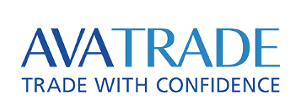Don’t invest unless you’re prepared to lose all the money you invest. This is a high-risk investment and you are unlikely to be protected if something goes wrong. Take 2 minutes to learn more
Determining the ideal moment to engage with or withdraw from the cryptocurrency market can often seem like a speculative endeavor. I understand as I’ve experienced it myself. Delving into the detailed study of the market changed the scenario for me.
This article highlights essential instruments like the Moving Average and Relative Strength Index, intending to enhance your cryptocurrency bot’s decision-making competencies. Prepare yourself for actionable guidance that could simplify the process of managing trades.
Key Takeaways
- Moving Averages help see trends by showing average prices over time.
- The Relative Strength Index spots markets that are overbought or oversold. This helps decide when to buy or sell.
- Bollinger Bands track market volatility and help manage risk by showing if prices are too high or too low.
- The Ichimoku Cloud indicates bullish or bearish trends, which can guide entry and exit points in trading.
- Fibonacci Retracements identify support and resistance levels, aiding in finding where the price might change direction.
Key Technical Indicators for Crypto Trading Bots
Within the crypto bots industry, being aware of the appropriate tools can significantly influence outcomes. Utilizing everything from linear indicators of price trends to intricate diagrams forecasting future shifts, these aids allow traders to make intelligent choices swiftly.
Moving Average (MA)
Moving Average (MA) is a tool I often use. It shows the average price over a set time, like 100 days. This helps me see the trend without short-term ups and downs. For crypto trading, this is key.
It turns complex market data into smoother lines on my chart.
A Moving Average smooths out price data to reveal market trends.
Using MA, I spot when to buy or sell by looking at how prices move with the average. If prices go above the MA line, it might be time to buy. When they drop below, selling could be wise.
This simple method guides me in cloudy markets, making decisions clearer and more grounded in real trends.
Relative Strength Index (RSI)
The Relative Strength Index, or RSI, helps me spot overbought and oversold conditions in the market. It uses a scale from 0 to 100. Values closer to 75 suggest an asset is overbought.
If it’s around 25, that means it’s oversold. This tool becomes key for finding potential trend reversals.
I look at RSI to guide my trading decisions. Traders often use it alongside other indicators like moving averages and Bollinger Bands for better insights. Monitoring these signals can help manage risk and identify strong entry and exit points in crypto trading strategies.

Bollinger Bands
Bollinger Bands measure market volatility. They consist of three lines: a simple moving average in the middle and two outer bands. These bands expand and contract based on price movements.
I find that 95% of trading tends to occur between the outer bands. This helps me track potential price breakouts. If the price touches the upper band, it may signal overbought conditions, while touching the lower band can indicate oversold conditions.
Using Bollinger Bands in crypto trading gives me insights into risk management and emerging trends.
Ichimoku Cloud
After discussing Bollinger Bands, let’s move to the Ichimoku Cloud. This indicator helps me see trends and key levels in crypto trading. It has five lines that show support, resistance, and entry or exit points.
I like using the Ichimoku Cloud because it tells me if a trend is bullish or bearish. A bullish signal appears when the price sits above a rising cloud. On the flip side, a bearish signal shows when prices drop below a downward-sloping cloud.
By reading these signals, I can make more informed decisions in my trading strategy.
Fibonacci Retracements
Fibonacci Retracements help me find key levels in price movements. I focus on numbers like 23.6%, 38.2%, 50%, and 61.8%. These levels mark support and resistance zones for crypto trading.
They guide me in spotting where prices might bounce back or reverse direction.
Using these retracement levels can sharpen my trading strategy. I see potential entry and exit points more clearly this way… It’s valuable for creating better trades with my crypto bot.
Next, I’ll explain how to integrate indicators with these bots effectively.
Purpose and Use of Each Indicator
Each indicator helps traders make informed decisions. They show trends, market strength, and potential buying or selling points.
MA: Identifying trends
I use Moving Average (MA) to spot trends in the crypto market. It tracks the median price over set periods, like 100 days. This helps me see long-term patterns. MAs smooth out price data and make it easier to identify bullish or bearish trends.
Using MA can help me make smart trading decisions. I watch for trend reversals and signals to enter or exit positions. By spotting these changes early, I can manage my trades more effectively.
RSI: Detecting overbought or oversold conditions
Technical indicators like the Relative Strength Index (RSI) are key in crypto trading. The RSI shows whether a market is overbought or oversold. Values above 75 suggest an asset is overbought, while values below 25 indicate it’s oversold.
Using the RSI helps me spot potential trend reversals. If I see an overbought condition, I brace for a pullback. In contrast, an oversold reading can signal a buying opportunity. This indicator acts as my guide to understand market sentiment and price movements effectively.
Bollinger Bands: Managing risk and volatility
Bollinger Bands help me manage risk and volatility in crypto trading. They show the price range based on market movements. The outer bands represent 95% of trading activity. Prices usually stay between these bands, which helps spot potential breakouts.
I watch how close prices are to the upper or lower bands. If prices hit the upper band, it may signal an overbought condition. If they touch the lower band, it might indicate oversold conditions.
These signals guide my entry and exit points in trades, making them a key tool for understanding price fluctuations in cryptocurrency markets.
Ichimoku Cloud: Identifying potential entry and exit points
The Ichimoku Cloud is a powerful tool for spotting entry and exit points in crypto trading. I find it helpful because it shows trends clearly. When prices are above the rising cloud, it’s a bullish signal.
This means more likely upward movement. Conversely, if prices sit below the downward-sloping cloud, it signals bearish trends ahead.
Traders often look to this indicator for quick insights on market sentiment and price action. Using the Ichimoku Cloud helps me to decide when to enter or exit trades effectively. It combines multiple lines that represent support and resistance levels too…
This makes it easier to see where potential changes might occur next. Let’s talk about how these indicators come together in bot algorithms now.
Fibonacci: Pinpointing support and resistance levels
After discussing the Ichimoku Cloud, it’s time to look at Fibonacci. This tool helps traders spot key support and resistance levels in price movements. I use Fibonacci retracements to predict where prices might change direction.
Fibonacci levels such as 23.6%, 38.2%, 50%, 61.8%, and 100% are crucial for finding potential reversal points. These percentages guide me in identifying where markets may bounce back or break through.
Recognizing these levels can enhance my trading strategies, especially when combined with other technical indicators like the Moving Average or RSI.
Integrating Indicators with Crypto Bots
Integrating indicators in crypto bots is key for success. I set up tools like Moving Averages and Bollinger Bands to help my bots decide when to buy or sell. Balancing these indicators gives me a better strategy to handle price movements.
Setting up indicators in bot algorithms
Setting up indicators in bot algorithms is crucial for success. I use tools like TradingView to integrate these indicators smoothly. Each indicator plays a role, whether it’s the Moving Average (MA) or the Relative Strength Index (RSI).
They help me decide when to enter or exit trades based on market trends.
To balance multiple indicators, I ensure they complement each other. For instance, Bollinger Bands can manage risk while the Ichimoku Cloud guides my entry and exit points. This strategy makes automated trading much easier and smarter.
Balancing multiple indicators for optimal strategy
After setting up indicators in bot algorithms, next comes balancing them for an optimal strategy. Using multiple indicators helps confirm signals and reduce false ones. I often combine technical analysis tools like Moving Averages (MA) and the Relative Strength Index (RSI).
This mix allows me to see trends clearly while checking for overbought or oversold conditions.
Combining these indicators is essential for proper decision-making. For example, if the MA shows a bullish trend but the RSI indicates overbought conditions, I take caution before entering trades.
Using this method improves my trading strategy and keeps risk lower in volatile markets. Adjusting how these indicators work together can lead to better results in crypto trading bots.
Advanced Techniques in Crypto Bot Technical Analysis
Advanced techniques in crypto bot analysis can give you an edge. Using methods like Volume Weighted Average Price (VWAP) helps track price trends better. On-Balance Volume (OBV) reveals buying and selling pressure, while the Aroon indicator shows trend changes.
These tools enhance your trading approach—making it smarter and more effective.
Applying Volume Weighted Average Price (VWAP)
Volume Weighted Average Price (VWAP) helps me find the average price of a cryptocurrency over time. It combines both price and trading volume to give a clearer picture of market trends.
If the market price is above VWAP, I see long pressure, which may signal buying opportunities. If it’s below, short pressure could suggest selling or caution.
Using VWAP in my crypto trading strategy can improve decision-making. It shows me where most traders are buying or selling. This insight helps identify entry and exit points better—key for successful automated trading with crypto bots.
Utilizing On-Balance Volume (OBV) and Aroon indicator
On-Balance Volume (OBV) helps track the flow of trading volume. It shows if money is moving in or out of a crypto asset. This can hint at future price movements. A rising OBV suggests that buying pressure is strong.
The Aroon indicator measures the time since the last high and low prices. It includes two parts: Aroon Up and Aroon Down. If Aroon Up rises, it signals possible bullish trends. Conversely, if Aroon Down increases, it may signal bearish moves ahead.
Using both OBV and Aroon together gives me better insight into market sentiment and potential trend reversals in cryptocurrency trading.
Backtesting and Optimizing Crypto Bots
Backtesting helps me see how my crypto bots would have done in the past. I use tools like TradingView and MetaTrader to test strategies, making sure they fit current market trends…
It’s key for success in automated trading.
Importance of historical data analysis
Analyzing historical data is key for improving strategies in crypto trading. It helps me see how assets moved in the past. This insight guides my decisions moving forward.
Incorporating this analysis lets me test trading strategies against real market events. The goal? To spot patterns and trends that could repeat. I often use tools and platforms to backtest, which limits risk while I refine my approach.
Data analysis turns guesswork into informed choices in automated trading with my crypto bot.
Tools and platforms for effective backtesting
Backtesting is key for crypto trading bots. I use tools like TradingView’s Strategy Tester. It helps test trading strategies with past data. This shows how a strategy would have worked in different market conditions.
Platforms like WunderTrading also make backtesting easy. They let me refine my methods, improving my chances of success. Having the right tools matters in automated trading… it makes all the difference!
Conclusion
Technical analysis is key for crypto traders. Using indicators like Moving Averages and RSI helps spot trends and market signals. I find tools like Bollinger Bands useful for managing risks.
Integrating these indicators with trading bots can enhance results. Keep testing strategies to adapt to the changing market conditions.
- Broker
- Min Deposit
- Score
- Visit Broker
- Award-winning Cryptocurrency trading platform
- $100 minimum deposit,
- FCA & Cysec regulated
- 20% welcome bonus of upto $10,000
- Minimum deposit $100
- Verify your account before the bonus is credited
- Fund Moneta Markets account with a minimum of $250
- Opt in using the form to claim your 50% deposit bonus
Learn to Trade
Never Miss A Trade Again

Signal Notification
Real-time signal notifications whenever a signal is opened, closes or Updated

Get Alerts
Immediate alerts to your email and mobile phone.

Entry Price Levels
Entry price level for every signal Just choose one of our Top Brokers in the list above to get all this free.



